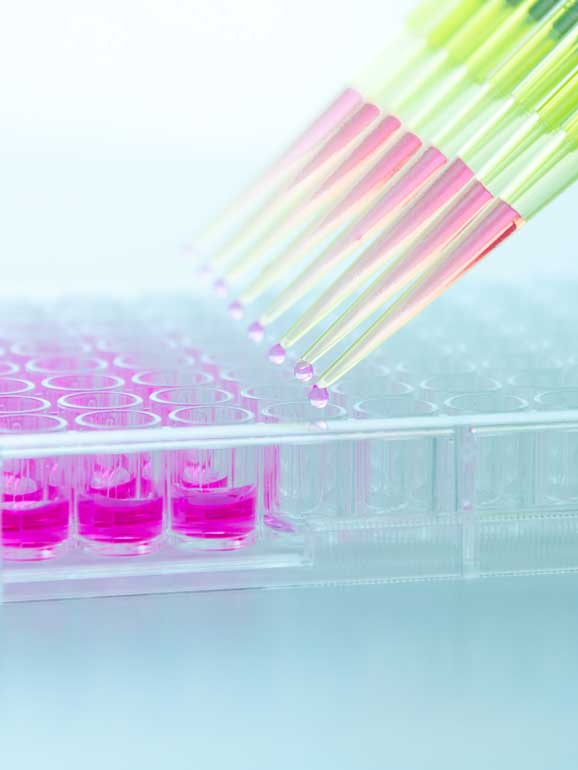Plaque Assay & Immunofocus Assay Services
ASSAY SERVICES
Let Us Get Your Plaque & Immunofocus Assay Data
Plaque assays and immunofocus assays are used to determine the number of infectious particles in a sample.
In these assays, the sample is prepared to be serially diluted and then added to a monolayer of permissive cells. After incubation, the inoculum is removed and replaced with a solid or semisolid overlay to force the virus to spread cell-to-cell forming so-called plaques or foci of infection. Upon a time compatible with 3-4 virus replication rounds, the assay is stopped and plaques/foci are visually quantified to determine infectious virus concentration.
While plaque assay is routinely used for cytopathic viruses that spread fast generating distinguishable plaques in a few days, the immunofocus assay reveals virus spread by immunostaining of a viral antigen. This technique is more commonly used for viruses that cause limited cytopathic effect, or when plaque formation requires longer times.
Our Approach
How our plaque and immunofocus assays are done.
At VRS, we use plaque/immunofocus assay to:
•titrate infectious units in viral prep
•quantify infectious units in cell culture media, blood, or tissue samples
•determine particle per infectious unit (particle:pfu) ratio
•study virus release in mode-of-action studies
•plaque reduction neutralization tests (PRNT)
Infectious units quantification by plaque assay or immunofocus assay is readily available for the following viruses:
Cytomegalovirus (CMV)
Dengue virus (serotypes 1-4)
Human coronavirus NL63 (HCoV-NL63)
Human coronavirus 229E (HCoV-229E)
Human immunodeficiency virus (HIV)
Influenza (A and B)
Respiratory syncytial virus (RSV)
Ross River virus
SARS-CoV-2
Semliki Forest virus
Sindbis virus
Vaccinia virus
Zika virus (African and Asian)
Other viruses may be available on request.
Subscribe

